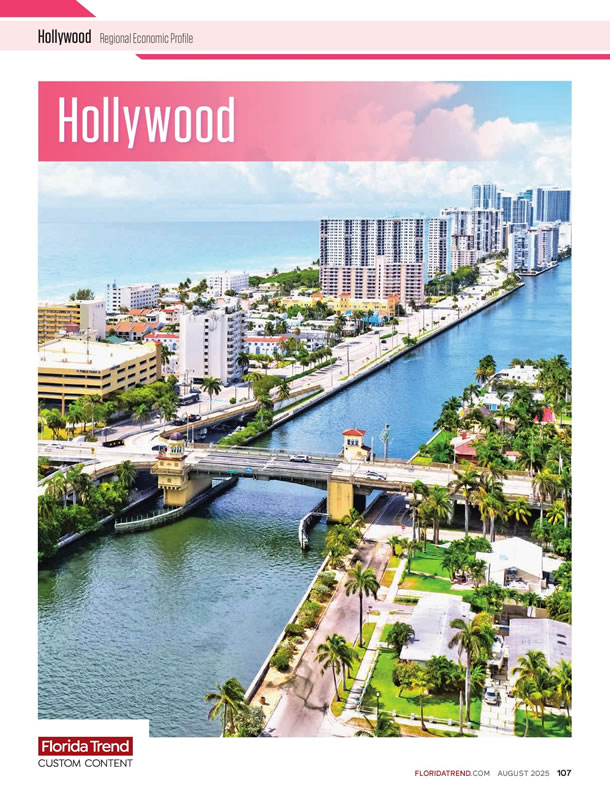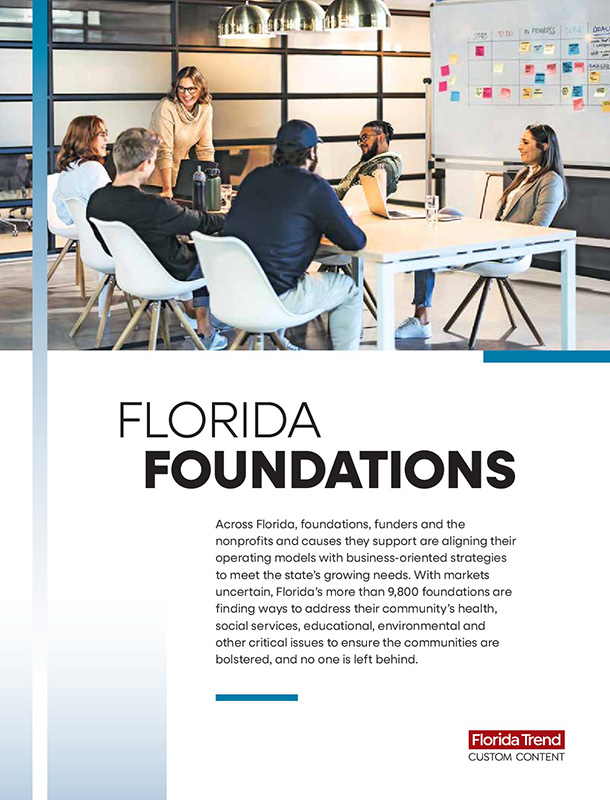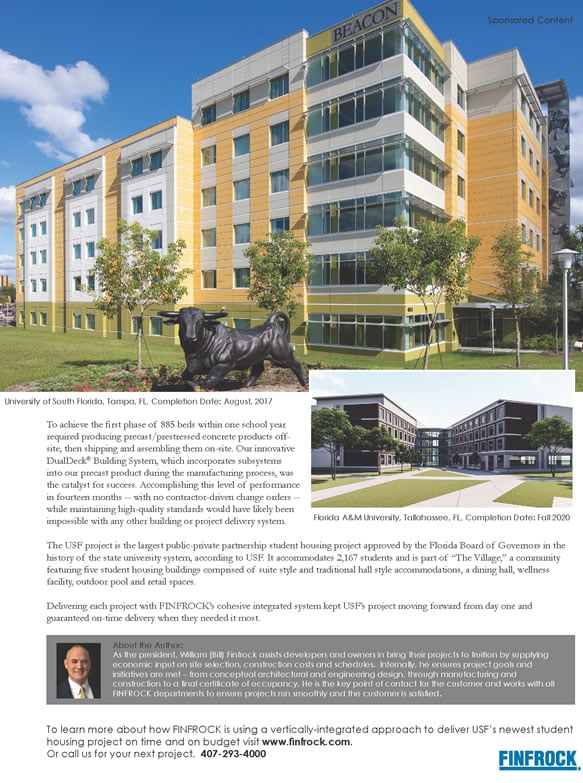May 2025 | Michael Fechter
Think of it as one of the world’s biggest and heaviest Lego sets. Six arches made of 345 precast segments, each weighing at least 90 tons, are being connected over downtown Miami to create a “Signature Bridge” that promises to become a defining image amid the city’s ever-changing skyline. Steel cables descending from the arches will support the 1,000-foot span, which is part of a massive $840-million project by the Florida Department of Transportation and the Greater Miami Expressway Agency.
But it’s much more than a pretty design. Once completed in late 2027, officials say the community will enjoy a safer roadway that can help move tourists and cargo more efficiently through an often bottlenecked interchange.
It includes a complete rebuilding of I-395, connecting I-95 traffic with the MacArthur Causeway, leading to the city’s cruise port and southern Miami Beach. Moving west, State Road 836, known as the “Dolphin Expressway,” is getting an elevated deck to carry cars and trucks above local traffic, zipping to and from Miami International Airport and PortMiami.
Entrance lanes from both roads to I-95 are being widened and improved. These are much-needed enhancements to an intersection that sees 450,000 daily trips.
“You’re not only enhancing capacity,” DOT Senior Community Outreach Specialist Oscar Gonzalez says of the double-decked addition, “but you are (also) greatly enhancing safety by reducing the weaving movements of people who are continuing on straight and those people who are wanting to get on and off the system. This is one of the great things about this project.”
Double-decked highways are not common but could be used more going forward, he says. “Typically when you do capacity improvements, you widen to the outside. … But that would obviously have impacts on adjacent businesses, residents, neighborhoods, right-of-way impacts, so in this case they designed it to go up, which greatly reduced impacts to the surrounding right-of-way.”
It adds the challenge of building over existing highway lanes, but the right-of-way savings can be significant.
DOT is working to insure the investment by installing a “health monitoring system” with more than 400 sensors on the signature bridge that can monitor its structural integrity and identify maintenance needs before they’re visible, says DOT resident engineer and project manager Jacqueline Sequeira.
And the hollow arch segments include interior stairs to allow inspectors to get inside to check for signs of stress.
Planners, meanwhile, took advantage of the project’s scale to create 33 acres of community space, including pedestrian paths under 395, “where pretty much there was nothing before,” Gonzalez says.
The original 395 was lower and wider, making it darker, with 800 support columns. It also cut off Miami’s Overtown community from the heart of the city. That will soon change. The new road will sit higher and require fewer than 100 columns, allowing more light and access.
While designs are not yet final, “people can walk all the way from the Overtown community to Biscayne Boulevard and to the bay,” Sequeira says. For project updates, go to https://i395-miami.com.













